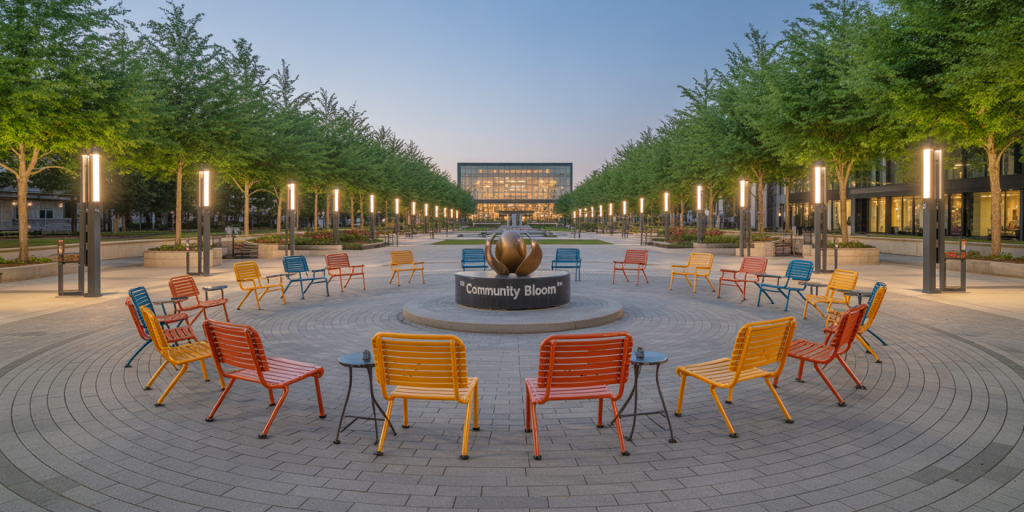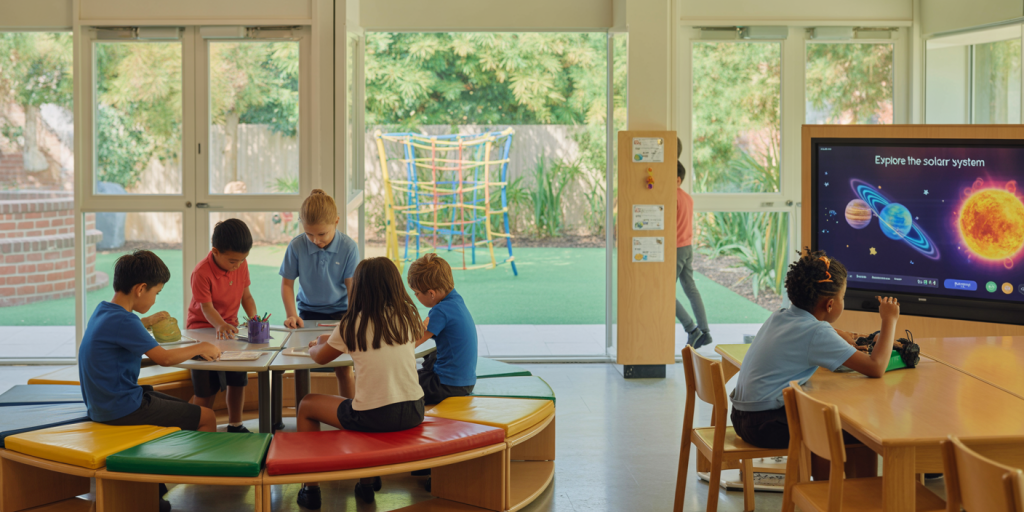Designing Environments That Naturally Shape Better Behavior
Creating environments that inherently encourage positive behavior has become a pivotal focus for architects, urban planners, workplace designers, and behavioral scientists. The convergence of psychology, design, and technology offers innovative ways to influence human conduct subtly yet effectively. This article explores how tailored environments can promote healthier, more productive, and socially beneficial behaviors, supported by real-world examples, data-driven insights, and practical frameworks.
The Power of Environmental Design in Behavioral Change
Human behavior does not occur in isolation; it is inextricably linked to the physical and social environments surrounding individuals. Behavioral scientists estimate that approximately 40% of daily behaviors are habitual and context-driven, largely influenced by the immediate environment (Lally et al., 2010). This underscores the potential leverage points in designing spaces that guide inhabitants toward better choices without reliance on regulations or punitive measures.
For instance, a workplace with open, well-lit areas and designated quiet zones mitigates distraction and promotes collaboration and concentration. Effects such as the “broken windows theory,” originally applied in criminology, further exemplify how visible environmental cues profoundly affect social norms and behavior. In New York City during the 1990s, maintaining clean and vandalism-free subway stations contributed significantly to the reduction of crime and anti-social behavior (Kelling & Wilson, 1982). These observations affirm that crafting environments purposefully can yield measurable improvements in societal behaviors.
Leveraging Nudges Through Environmental Cues
One of the foundational concepts in behaviorally-informed design is the use of “nudges”—subtle modifications in the choice architecture that steer people toward beneficial decisions without restricting freedom. Nudging via environmental cues is a low-cost, ethical approach widely applied in healthcare, education, and public spaces.
A practical example includes strategically placing healthier food options at eye level in cafeterias and supermarkets to encourage better eating habits. A 2018 study published in *Health Psychology* demonstrated that by simply repositioning fruits at checkout counters, purchases of healthier items increased by 25% (Thorndike et al., 2018). Similarly, staircases designed to be more visually appealing and accessible than elevators can significantly raise stair usage in office buildings, promoting physical activity. The “Music Staircase” project in Stockholm, where stairs played musical notes when stepped on, reported a 66% increase in stair use over escalators (Norman, 2013).
Environmental nudges distinguish themselves from coercive measures by preserving autonomy while gently shaping behavior patterns. The design focus lies in harnessing natural human tendencies, such as defaults, salience, and social norms, embedded within the physical surroundings.
Designing Public Spaces to Enhance Social Interaction and Safety
Public spaces serve as communal backbones that influence social behavior, crime rates, and community wellbeing. Successful placemaking that considers behavior can foster inclusivity, reduce conflict, and encourage civic engagement.
The design principles of “Crime Prevention Through Environmental Design” (CPTED) provide a framework for modifying environments to reduce criminal behavior. CPTED integrates natural surveillance, territorial reinforcement, and access control to shape safer environs. For example, better lighting, clear sightlines, and strategic landscaping discourage illicit activities by increasing perceived risk for offenders.

An illustrative case is the redesign of the Bryant Park in New York City during the 1980s, which transformed a previously crime-ridden area into one of the safest and most vibrant urban parks in the city. The introduction of movable chairs, active programming, and open sightlines resulted in a dramatic 60% drop in crime and boosted park attendance by over 400% (Whyte, 1980). This demonstrates how environmental features directly impact social dynamics and behavior.
Moreover, color schemes, seating arrangements, and accessible paths can foster positive interactions and reduce social isolation. Designing multifunctional spaces encourages diverse usage, catering to various age groups and cultural backgrounds, which enhances the social fabric.
Workplace Environment’s Role in Productivity and Employee Behavior
The design of workplaces substantially influences employee behavior, motivation, and productivity. According to a 2022 report by Steelcase, well-designed work environments can improve productivity by up to 20% due to factors like natural light, thermal comfort, and noise control.
Open-office layouts initially aimed to increase collaboration but have frequently led to distractions and stress. Comparative studies between open and hybrid office designs show that incorporating quiet zones and private workspaces significantly improves focus and reduces absenteeism by 15% (Kim & de Dear, 2013). The balance between social areas and secluded spots is crucial in fostering desired behaviors like teamwork and deep work.
Biophilic design, integrating natural elements such as plants, water features, and natural materials into offices, has been linked with a 15% reduction in stress and a 6% boost in cognitive function (Kellert et al., 2011). For example, Amazon’s Spheres in Seattle provide employees with green, open environments promoting creativity and wellbeing, connecting behavior and environment seamlessly.

| Design Element | Behavioral Impact | Supporting Data | Example |
|---|---|---|---|
| Natural Light | Improves mood, alertness | 15% higher productivity (Steelcase 2022) | Google’s Zurich Office |
| Quiet Zones | Enhances focus, reduces stress | 15% less absenteeism (Kim & de Dear 2013) | Microsoft Redmond Campus |
| Biophilic Design | Lowers stress, improves cognition | 15% stress reduction (Kellert et al. 2011) | Amazon Spheres, Seattle |
Educational Environments: Setting the Stage for Learning and Behavior
Classrooms and educational institutions benefit greatly from behavioral design. Research indicates that environmental factors such as lighting, acoustics, and spatial organization have profound effects on student behavior and academic outcomes.
A study by the University of Salford found that students in classrooms with optimized natural lighting scored 18% higher on standardized tests, linking environment to performance and attention (Barrett et al., 2015). Similarly, incorporating flexible seating and interactive zones in classrooms encourages active learning and social collaboration, reducing disruptive behavior.

Schools like the Ørestad Gymnasium in Denmark implement open, airy learning spaces with movable furniture and technology hubs, promoting autonomy and creativity among students. Such designs recognize the natural tendencies of young learners to move, interact, and explore, channeling these behaviors constructively.
Outdoor learning spaces and green areas also contribute to reduced stress levels and increased attentiveness. Incorporating such environments can lower incidents of bullying and improve social cohesion by fostering shared positive experiences outside traditional classrooms.
Future Perspectives: Integrating Technology and Nature in Behavioral Design
The future of environmental design for behavior shaping lies in synergizing technology and ecological principles. Smart environments equipped with sensors and adaptive systems can provide real-time feedback to occupants, promoting sustainable and healthful practices.
For example, “smart buildings” monitor air quality, lighting, and occupancy levels, adjusting conditions automatically to enhance comfort and productivity. In the realm of urban design, integrating green infrastructure such as bioswales, urban forests, and permeable pavements improves environmental quality, which has measurable benefits on mental health and community behavior. Studies associate proximity to green spaces with a 20% reduction in anxiety and depression rates (World Health Organization, 2016).
Additionally, virtual and augmented reality tools can simulate behavioral outcomes and allow iterative design refinement before physical implementation, reducing costs and increasing efficacy.
The challenge moving forward is to ensure equitable access to well-designed environments, mitigating disparities that contribute to negative social behaviors. By harnessing interdisciplinary collaboration among architects, psychologists, policymakers, and technologists, we can create spaces that not only respond to human needs but actively nurture desirable behaviors on a societal scale.